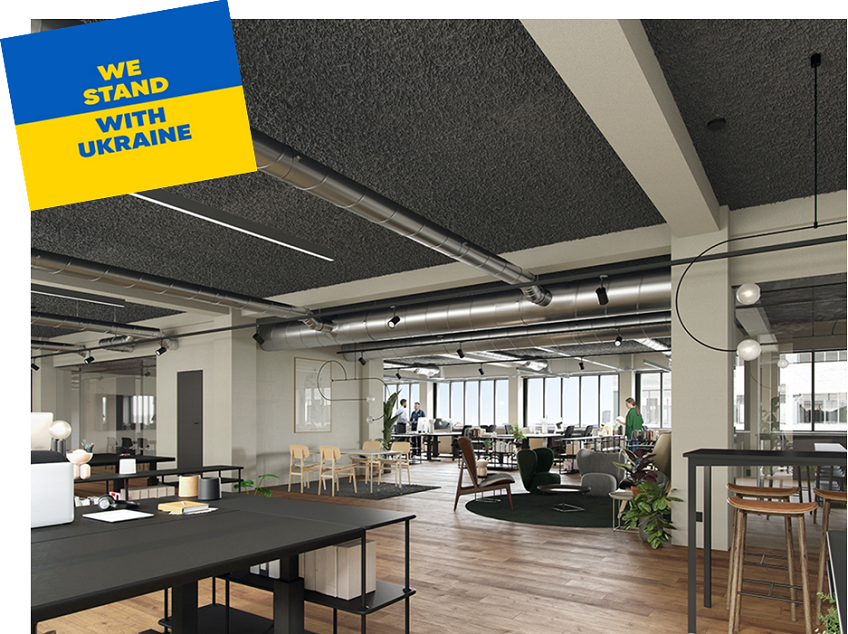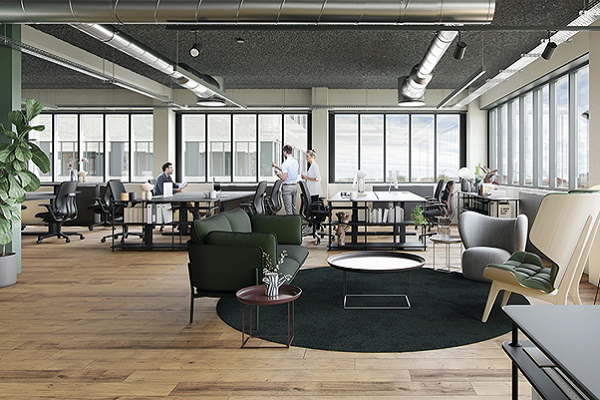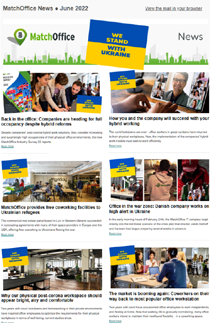
Why our physical post-covid workspace should appear bright, airy and comfortable

The physical office space and environment you recently went back to after a two-year corona break in your home office must, besides being healthy and safe, appear bright, airy and delicious also.
The pandemic has highlighted the importance of genuine work-life balances and has transformed the physical office space into more than just a workplace.
This paradigm shift places office workers at the centre of flexible design, focusing on their individual preferences for health and well-being in their new-old workspace and environment.
A series of surveys and reports signal how returned and returning office employees imagine the new times and updated fixtures of their old physical work environment.
More homeliness
"We regard an increasing need among companies to rethink their available spaces. We do not see any definite decline in the consumption of square meters. But, today, the importance of height-adjustable tables is replaced by the desire for more and larger social areas, project and collaboration zones.
Smaller meeting and focus rooms are highly in demand. They must, first of all, be able to support hybrid meetings, where physical and digital teams merge across national borders," architect and head of Workplace Advisory at Colliers Denmark, Tine Mouritsen, says.
 The pandemic has highlighted the importance of a genuine work-life balance and has transformed the physical office space into more than just a workplace. Photos: Lintrup & Norgart |
"When we no longer need to show up but may show up, the design of the office and its working life function becomes more significant for the company's ability to retain and attract employees. Focus on the hybrid work rhythm also applies in the choice of working method and the style of the decor.
That means more homeliness, materiality, colours, good acoustics, soft shapes, and kindness. The balance between the home office and the professional environment is, and the human touch upgraded."
Office as a meeting place
"Even though we'll experience double or maybe three times as much telework in the future, we'll still need our physical offices. If we imagine that the office will be a meeting place, the designs need to facilitate different types of meetings:
Meeting rooms, embracing the company's formal meetings with customers, the board, etc., another type of room for the more informal project meetings with colleagues and other differently decorated rooms for the many categories of digital meetings..
Also, lounges are needed to create life and the movements of spontaneous meetings," Colliers Sweden states in the first part of their official yearly report, Stockholm 2022.
|
|
"All offices have employees eager to return to their desks full-time as soon as possible and others who find it convenient to work from home and use digital technologies to work most efficiently.
Future offices must handle these extremes and the variants between working from the office sometime and the distance at other times.
Those different personality types exist in the same workplaces as employees, customers, suppliers, and the office must be able to reach and comfort them all," Karin Witalis, head of research at Colliers Sweden, points out.
Seven trends
Colliers´current Swedish office market report identifies seven main trends that will shape the requirements of the future office after the corona.
These seven trends could overlap and emerge in headlines: Digitization, situation, meeting, flexibility, identity/brand, health and environment.
 If we imagine future office as meeting place first of all, the designs need to facilitate all different types of meetings," Colliers Sweden emphasizes in the first part of their yearly report Stockholm 2022. Photo: Colliers Denmark |
"The covid lockdowns gave us a two-year trial period with a flexible and non-local approach. Quickly we learned to use Skype, Teams and other digital technologies. However, we also became aware of the need for physical meetings to function well and perform creatively.
Now, that the pandemic is over, we have a lot of new knowledge to pour out as we shape our new offices and future work rhythms," Karin Witalis adds.
"Let's pull the raisins out of the cake and go on to apply all the new clever things we learned during the pandemic and communicate them into new, wisely designed office spaces. Spaces that can support physical meetings and the other things we've missed over the past two years."
Read more:
Colliers.com/sv-se/research: The office is-dead, long live the office
Allwork.space: How do we create a workplace that people want to return to?
Gensler.com: 10 considerations for transitioning back to work in a post-covid world
Insidesmallbusiness.com: Time your business designed a better post-covid workplace?





